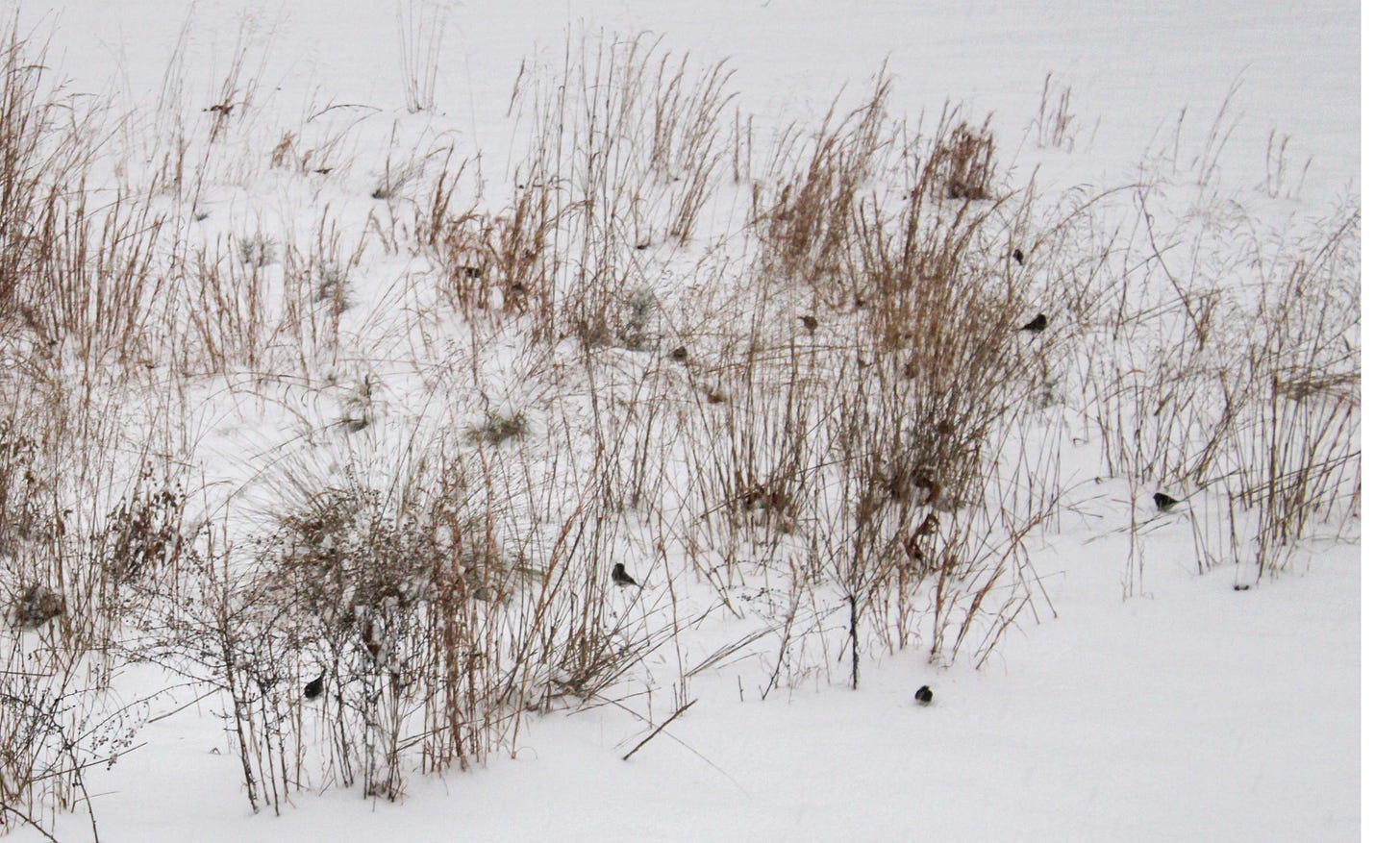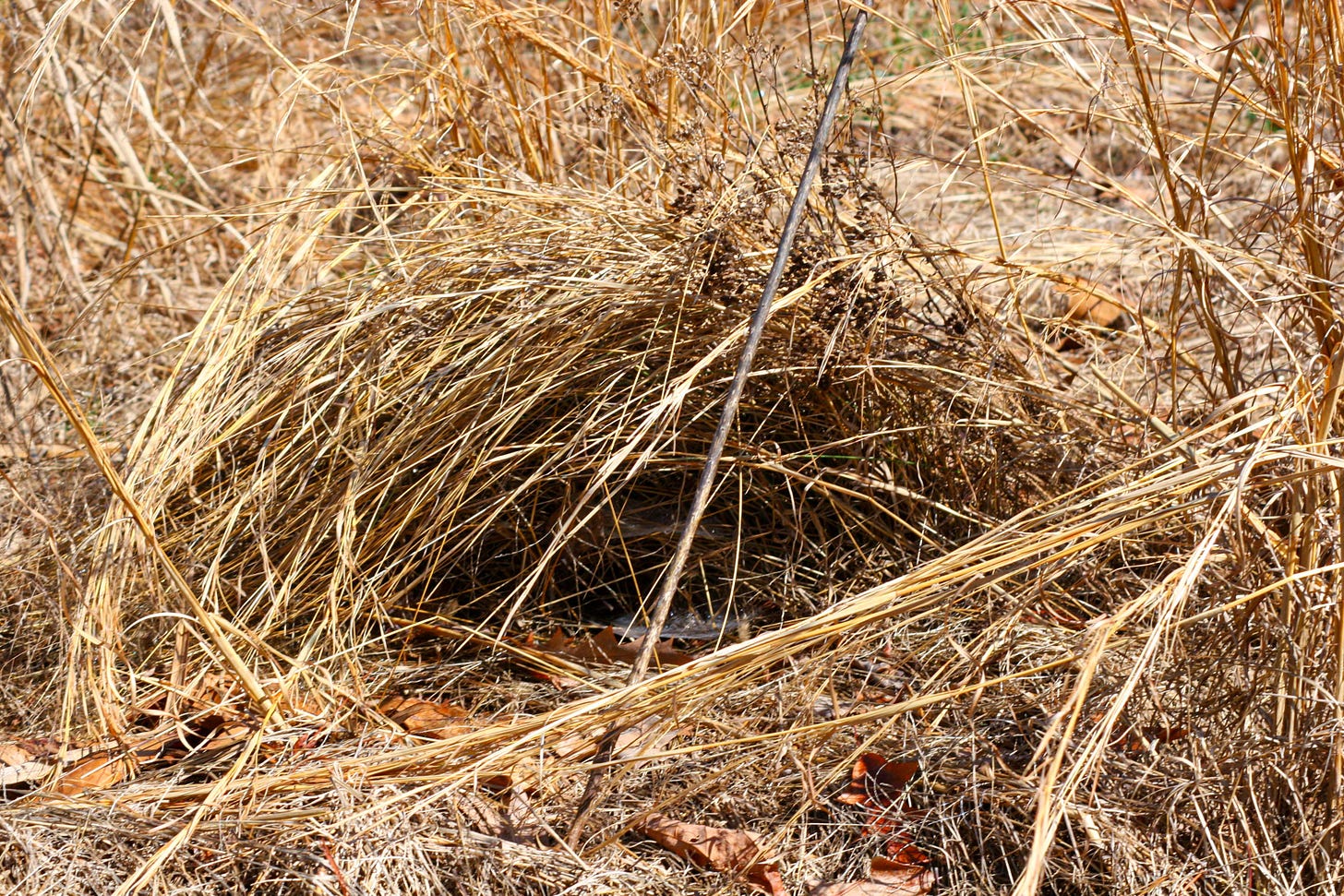Being snowed in on the Maryland’s Eastern Shore is almost a surreal experience, especially if you’ve spent most of your life in the frozen tundra of northern NY. South of Canada, yes, but infamously snowy and cold.
But, up in that frozen land, roads are cleared well. Teams of snowplows roam the streets like frightened schoolgirls at their first dance, and people have these marvelous inventions called “snow tires.” Down in the warm weather Delmarva Penninsula, does anybody outside of a cold weather refugee even know why they’re special? Probably everyone thinks “all weather” will do the trick. (Snow tires are designed to throw the snow out of the treads. They work well.)
Oh well. The snow on the Eastern Shore disappears almost magically while in snow country it hangs around for a while… months. Maybe many months. So, it’s best to enjoy the snowy interlude down here – it won’t last long.

Left to solitary “can’t get out” devices, it’s almost impossible to ignore the birds. They’re busy finding food; feeders can be refilled almost endlessly, while those lucky enough to have their own meadow, or pocket meadow, can watch a captivating show, too. Small birds like juncos and bluebirds are masters of snagging nutritious grass seeds. Like manic jack-in-the-boxes, they jump up and down, forcing the grass to bend to the ground where they can just stand and munch. If the grass won’t bend to their will, they just hang on to the stalk and eat the seeds anyway. Too heavy for the grasses, cardinals watch jealously, but find their way to the wax myrtle to strip the previously seed laden branches bare. All hide in pockets under the snow, where it’s warmer.
Wait – what – warmer under the snow? You bet.
All sorts of creatures enjoy a good snowfall and the easy living that comes along with it for them. It might seem strange, but snow acts like a blanket, simultaneously keeping the area no colder than 32° F, but also blocking the loss of heat from the soil. This creates a layer that can be quite a bit warmer than surrounding air. 32° F isn’t balmy, but when temperatures are below freezing, perhaps well below with wind chill, it’s pretty pleasant for those who don’t have central heat.
As you’re guessing, this little haven has a scientific name. It’s called “the Subnivean Zone.”
Science tells us that warmer air from the soil causes the first layer of snow to melt and then refreeze, creating a crust that holds up more snow and a layer beneath of humid, relatively warm air. Small creatures love this, and they’ll create tunnels and living rooms and other spaces to call home.
As you would expect, most of the classic Subnivean Zone inhabitants are tiny. Moles, voles, mice red squirrels and chipmunks predominate, with some smart birds, too. Some cold blooded animals live there, too, utilizing the relative warmth to help survive winter.
Most mammals eat plants, right there “in the zone” but other residents, particularly birds, come out to feed. Not fooled by these creatures’ attempts to hide, owls, foxes, fishers and other predators use their amazing hearing – and possibly ability to smell – to find these hidden morsels. Fishers enjoy this zone themselves, remaining hidden from view while they create mayhem for the other residents.

Birds like chickadees and grouse will hide beneath the snow, often keeping their heads just above the top to watch for predators like submarines periscopes looking for enemies.
If you’re lucky, you may get to see a fox dive into the snow to run off with a mouthful. It’s fun; foxes punch through the snow cover with their front feet and shove their nose right after. Owls hoot about, and wait for the perfect moment to swoop in for dinner. Powerful apex predators, owls can break through snow so solidly crusted it will support a large human and capture prey beneath 18 inches of snow. So much for easy living for moles, voles and mice…
Other subnivean zones are created by low-growing shrubs. Here birds dominate. They sneak under the snow cover, find a nice branch to sleep on, and rest. Often they snuggle together for warmth, and, if the family dog decides to investigate under that shrub, you might be startled to see an entire flock of birds come shooting out. Not to worry – next time the dog tries that trick, you’ll see the same flock. They just go to a nearby tree and wait out the dog, who is almost invariably has ADD and just can’t focus on waiting for the birds to come back.
If you don’t have low-growing, evergreen shrubs or a delightful meadow, brush piles will do the trick for many.
Evergreen trees won’t make a Subnivean Zone, but they will provide cover, and sometimes, food, for chilly birds. As always, the snow helps to insulate the air, in this case, closest to the trunk, and your favorite beauties like cardinals, jays, and woodpeckers are comfortable there. Like soil, trees can warm the air around their trunks. Birds are wiser than we’ve thought!
So, snow might keep you home, but enjoy your heat and take the time to avoid cabin fever to thoroughly enjoy Mother Nature’s game plans!
Then – enjoy spring!
Reenie Rice






Echoing Terry Holman, this was the perfect article to accompany our current weather conditions. Thanks for entertaining and informative writing.
Such a perfect topic for a cold winter's day.
Thanks for educating us about snow blankets
and how creatures use these to survive winter!
I also learned a new word, "subnivean," for Scrabble!